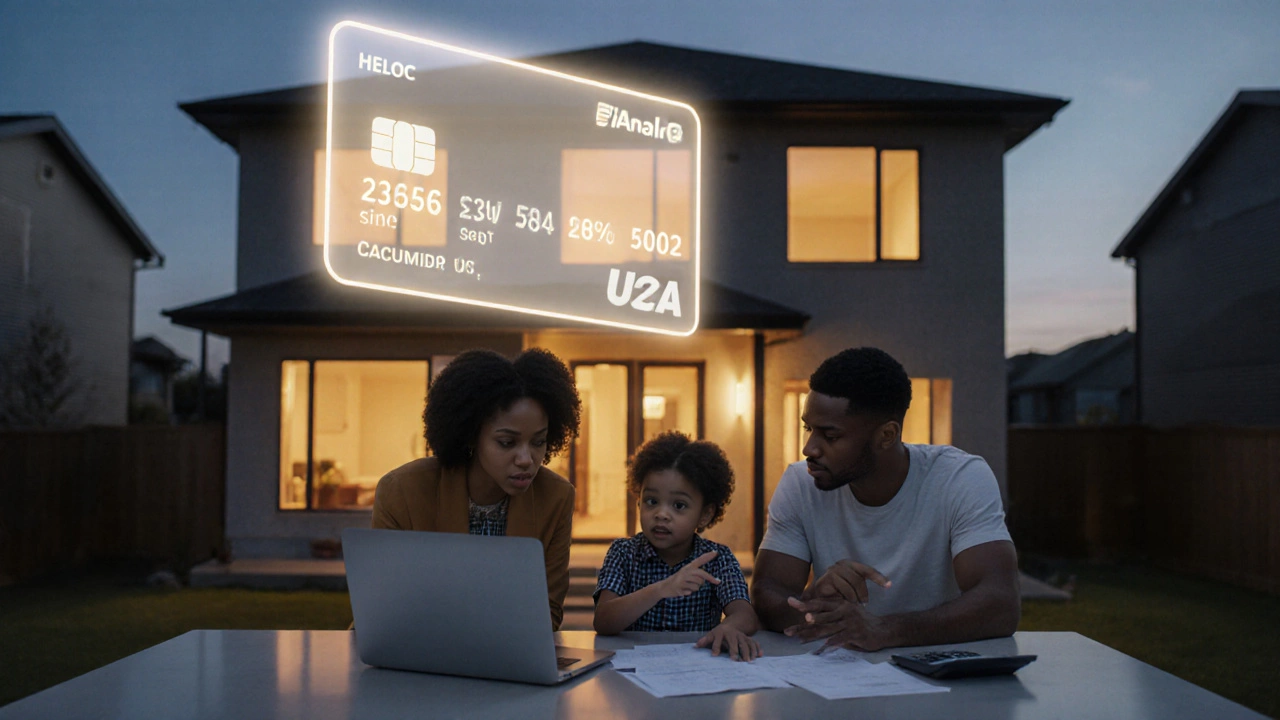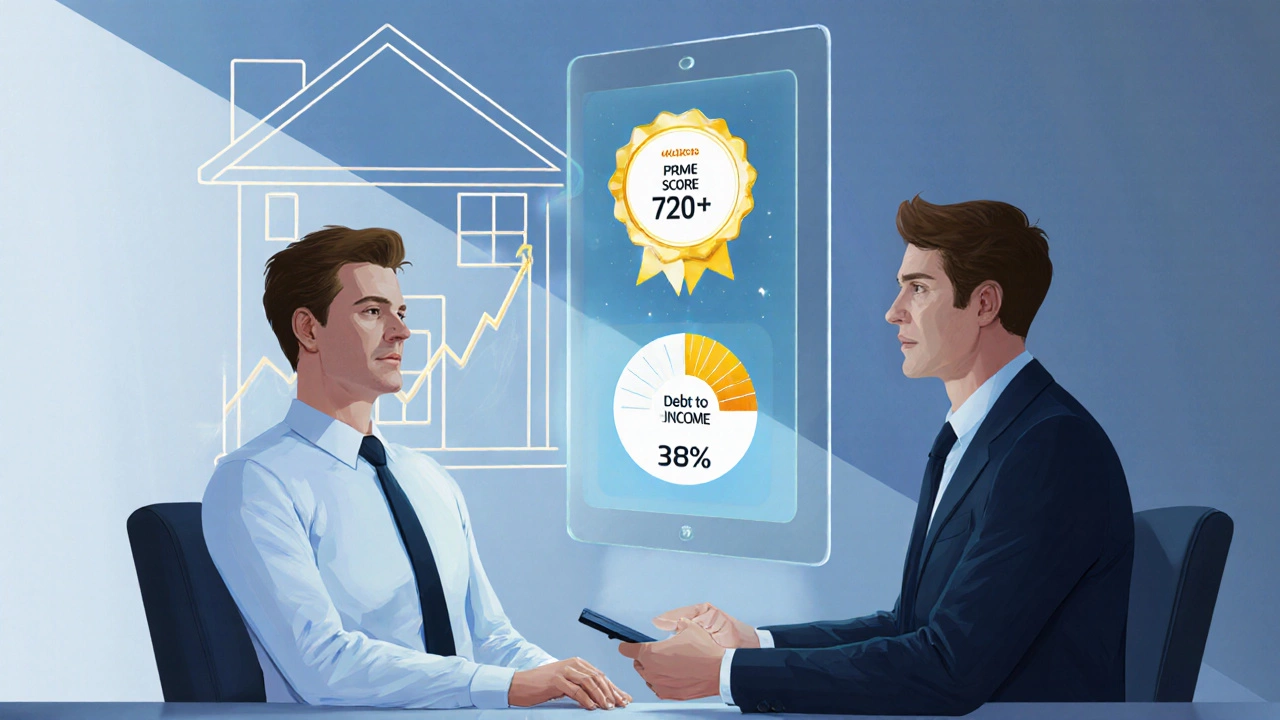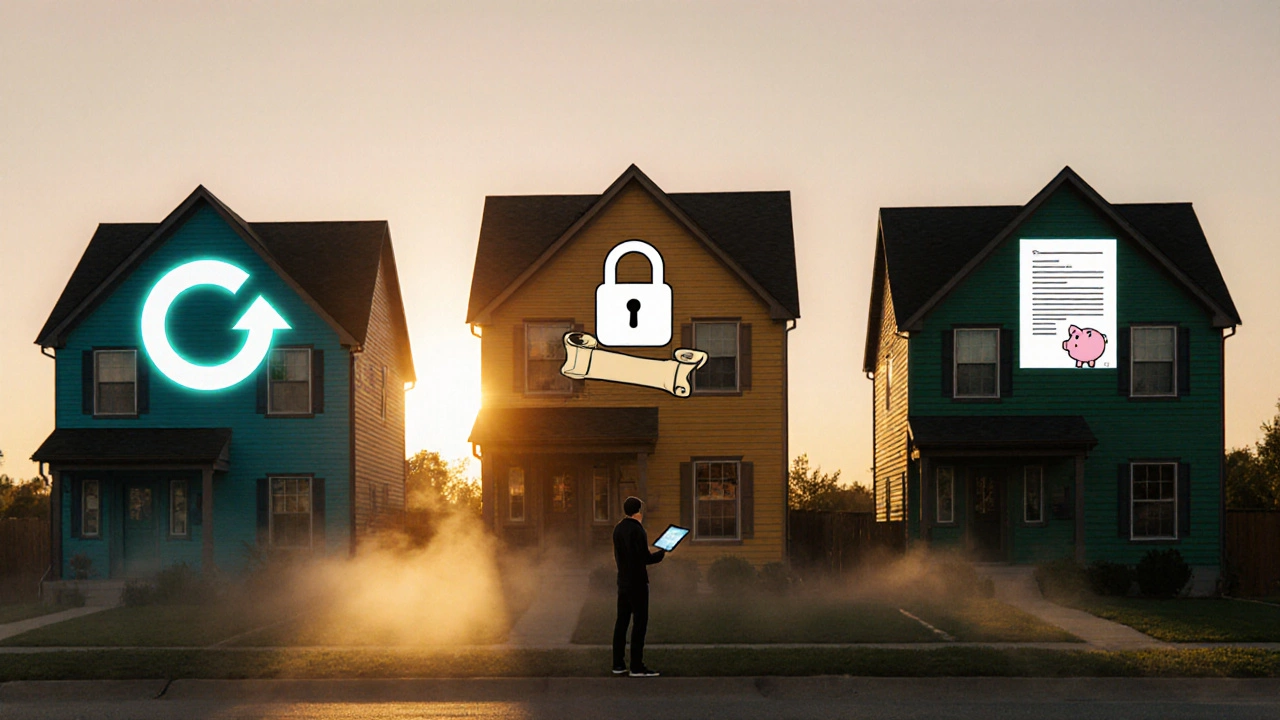Is a HELOC Worth It in 2025? Pros, Rates, and How to Decide
 Oct, 13 2025
Oct, 13 2025
HELOC Cost Calculator
Calculate Your HELOC Costs
Key Takeaways
- HELOC rates in Canada are closely tied to the prime rate, which sits around 5.75% in October2025.
- Borrowers with a credit score above 720 and a debt‑to‑income (DTI) ratio under 40% usually qualify for the best terms.
- Use a HELOC for flexible, short‑term needs (renovations, debt consolidation) rather than long‑term financing.
- Compare the total cost of a HELOC against a cash‑out refinance or a home‑equity loan; the cheaper option depends on how long you plan to draw the funds.
- Watch the variable‑rate environment - if the Bank of Canada signals hikes, lock in a fixed‑rate HELOC or consider alternatives.
HELOC is a home equity line of credit that lets homeowners borrow against the equity built in their property on a revolving basis. It works like a credit card attached to your house: you get a credit limit, draw what you need, and only pay interest on the amount you actually use.
If you’re wondering whether a HELOC makes sense today, you need to look at three moving parts: current interest rates, your personal financial picture, and the alternatives on the market.
How HELOC Rates Are Determined in 2025
Canadian banks set HELOC rates as a spread over the prime rate is a benchmark interest rate that major banks use for variable‑rate products. As of 13October2025, the prime rate is 5.75%, up from 5.45% six months ago, reflecting the Bank of Canada’s recent 25‑basis‑point hike.
Most lenders add a 0.5‑1.5% margin, so the typical HELOC rate sits between 6.25% and 7.25% for qualified borrowers. Premium customers with excellent credit can snag a margin as low as 0.25%, pushing their rate under 6%.
Who Qualifies for a Good HELOC?
Beyond the rate, the approval process hinges on two key metrics:
- Credit score is a numerical representation of a borrower’s creditworthiness, ranging from 300 to 900 in Canada. Scores above 720 generally unlock the lowest margins.
- Debt‑to‑income (DTI) ratio is a percentage that compares a borrower’s monthly debt payments to gross monthly income. A DTI under 40% is the sweet spot for most lenders.
Equity also matters. Lenders will calculate your home equity is a the difference between current market value of the property and the outstanding mortgage balance. Most banks allow you to borrow up to 65% of that equity, though some premium products stretch to 80%.

When a HELOC Beats a Traditional Mortgage or Loan
Consider the following scenarios:
- Renovations with uncertain costs. Because you only pay interest on what you draw, a HELOC can be cheaper than a fixed‑rate home‑equity loan that charges interest on the full amount from day one.
- Debt consolidation. If you can replace high‑interest credit‑card debt (average 19% APR) with a HELOC at 6‑7%, the monthly savings are significant.
- Short‑term cash flow gaps. A HELOC gives you instant access to funds without the paperwork of a new mortgage.
However, if you need a large lump sum that you’ll repay over many years, a cash‑out refinance is a mortgage refinance that replaces your existing loan with a higher balance and pays you the difference in cash might be cheaper because its rate is often lower than a HELOC’s variable rate.
HELOC vs. Home‑Equity Loan vs. Cash‑Out Refinance
| Feature | HELOC | Home‑Equity Loan | Cash‑Out Refinance |
|---|---|---|---|
| Repayment style | Revolving, interest‑only possible | Fixed monthly payments on full amount | Fixed mortgage‑style payments |
| Typical rate (2025) | Prime+0.5‑1.5% (≈6.25‑7.25%) | Fixed 5.5‑6.5% | Fixed 5.0‑5.9% |
| Maximum loan‑to‑value | Up to 65% (some up to 80%) | Up to 55%‑60% | Up to 80%‑85% |
| Best for | Flexible, short‑term borrowing | Lump‑sum, predictable repayment | Long‑term, large cash needs |
Step‑by‑Step: How to Apply for a HELOC in Canada
- Check your credit score. Pull your report from Equifax or TransUnion and address any errors.
- Calculate your home equity. Get a recent home appraisal is a professional estimate of market value used by lenders to determine borrowing limits or use an online estimator.
- Equity = Market value - Outstanding mortgage balance.
- Gather financial documents: recent pay stubs, tax returns, and a list of existing debts to compute your DTI.
- Shop around. Compare at least three banks or credit unions, noting the prime spread, fees, and any promotional fixed‑rate periods.
- Submit the application. Most lenders let you do this online; you’ll upload documentation and schedule a brief appraisal if needed.
- Review the commitment letter. Verify the credit limit, rate, draw period, and repayment terms before signing.
- Watch out for hidden fees: appraisal, annual maintenance, and early‑closure penalties.

Common Pitfalls and How to Avoid Them
- Relying on low introductory rates. Some lenders offer 0% for the first three months, then jump to prime+2%. Always calculate the “true cost” over the expected draw period.
- Over‑borrowing. It’s tempting to max out the limit, but remember you’ll pay interest on the balance every month. A good rule is to keep usage under 50% of the approved limit.
- Ignoring the variable‑rate risk. If the Bank of Canada raises rates again, your HELOC cost could climb quickly. Consider a hybrid HELOC that lets you lock in a fixed portion.
- Skipping the DTI check. Even if you have equity, a high DTI can push your margin up by 0.5%‑1%.
Bottom Line: Is a HELOC a Good Idea Right Now?
In October2025, HELOCs sit at 6‑7% - higher than the 5%‑6% fixed home‑equity loans but still well below credit‑card rates. If you have solid credit, a low DTI, and need flexible access to cash for a renovation or debt consolidation, a HELOC can be a smart, cost‑effective tool.
Conversely, if you plan to borrow a large sum and hold it for more than five years, a cash‑out refinance or a fixed‑rate home‑equity loan will likely save you money.
Run the numbers, compare the alternatives in the table above, and choose the product that aligns with your timeline and risk tolerance.
Frequently Asked Questions
Can I get a HELOC if I already have a mortgage?
Yes. Lenders treat the HELOC as a second‑level loan secured by the remaining equity after your primary mortgage is accounted for. Your combined monthly payments just need to keep the DTI within the lender’s limits.
Is the interest on a HELOC tax‑deductible?
Interest is deductible only if the funds are used to improve the home that secures the line. Using a HELOC for vacation or everyday expenses does not qualify.
What’s the difference between a variable‑rate and a fixed‑rate HELOC?
A variable‑rate HELOC tracks the prime rate and can change month‑to‑month. Some banks now offer a hybrid option where you can lock a portion of the limit at a fixed rate for a set period, giving you stability on part of the balance.
How much can I realistically borrow?
Most lenders allow 65% of your available equity. For a home worth $800,000 with a $300,000 mortgage, equity is $500,000. 65% of that is $325,000 - the typical maximum credit line.
What fees should I expect?
Common fees include a $200‑$500 appraisal, a $100‑$200 annual maintenance fee, and possibly a $150‑$300 commitment fee if you draw less than 50% of the line in the first year.
